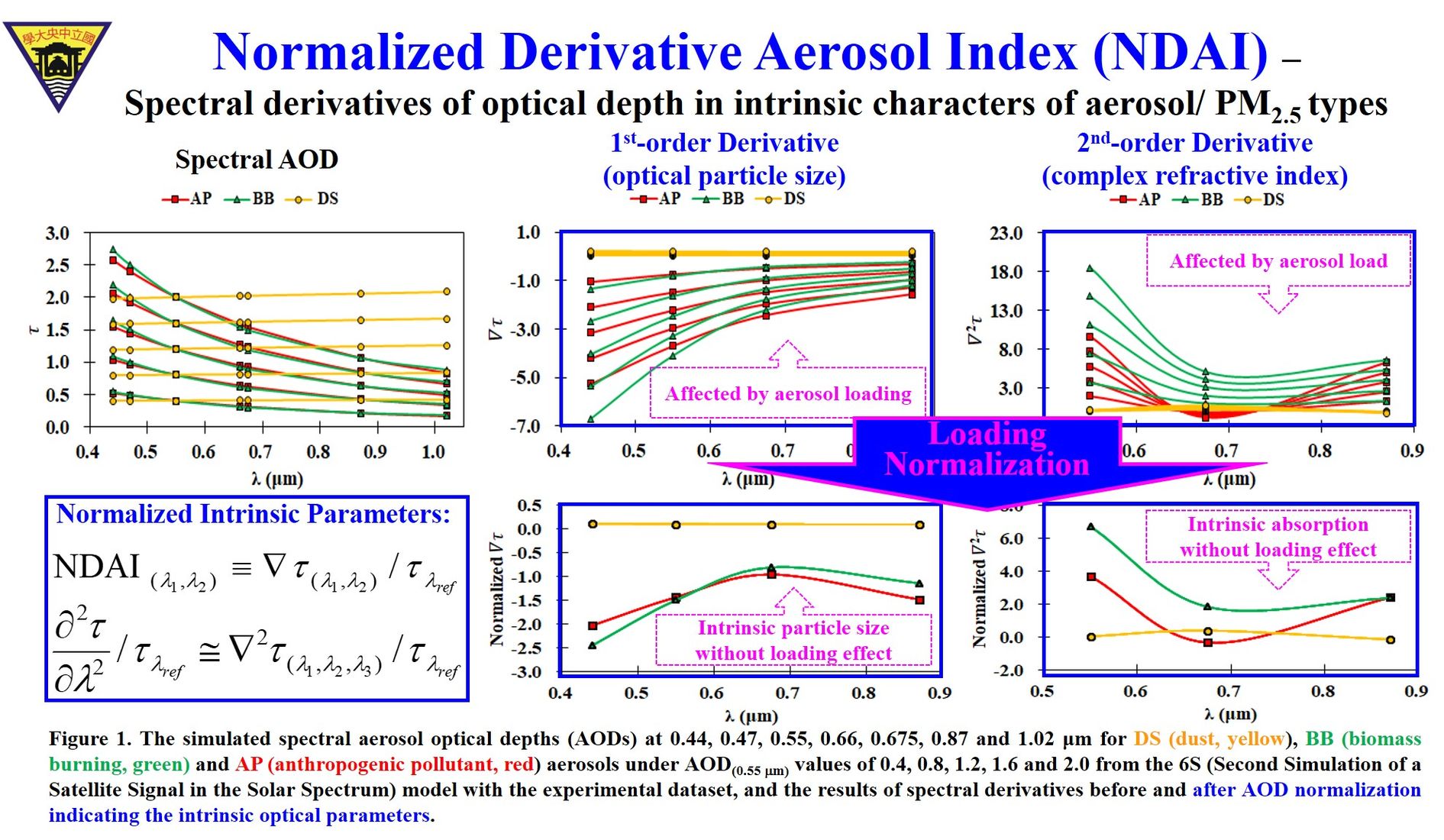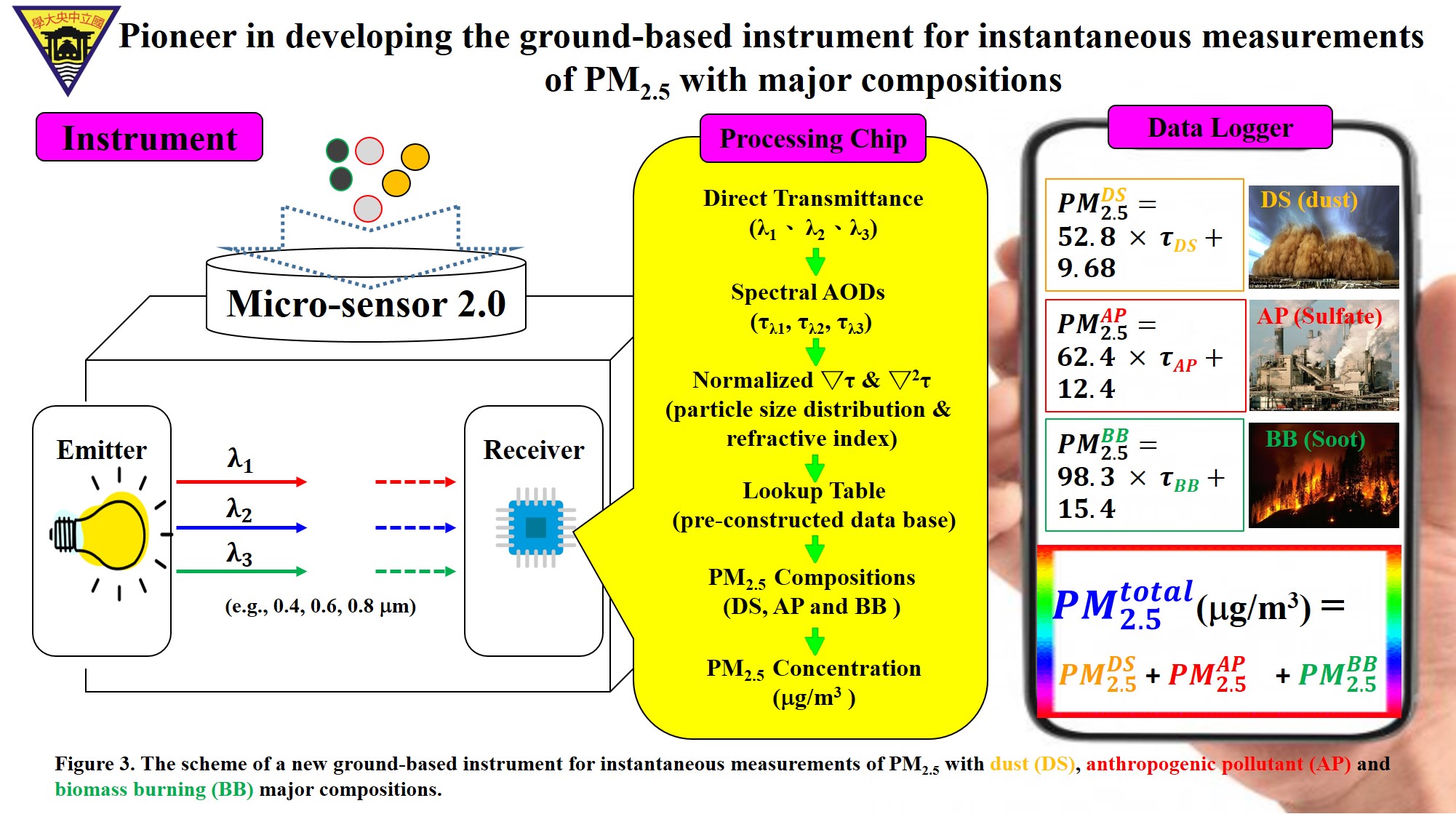| Technical Name | Optical remote sensing of PM2.5 major componentsconcentration | ||
|---|---|---|---|
| Project Operator | National Central University | ||
| Project Host | 林唐煌 | ||
| Summary | In terms of particle size distributioncomplex refractive index, the normalized first- & second-order spectral derivatives (Normalized Derivative Aerosol Indexes, NDAIs) of spectral aerosol optical depths (AODs) are explored to partition the major components of aerosols, including mineral dust (DS), biomass burning (BB)anthropogenic pollutants (AP),stretching out to their weightings with a unique pattern clearly exhibited for bounding the major aerosol components in turn, fractions of the total AOD for major aerosol components can be identified for PM2.5 estimation accurately. |
||
| Scientific Breakthrough | Applying the discrepancies of BB, APDS aerosols in the derivatives of spectral AODs, an approach (Normalized Derivative Aerosol Index, NDAI) is proposed, (1) to partition the major components of aerosol types based on their multi-spectral optical depth (2) to map out the spatial distribution of AOD dominated by DS, BBAP aerosols via satellite observations(3) to optimistically compensate for the lack of single scattering albedo (SSA) measurements while assessing aerosol radiative forcing. |
||
| Industrial Applicability | 1. Highly international competition: the authorized instrument for instantaneous measurements of PM2.5 concentration with major compositions could be the pioneer in developing the ground-based measurement 2. Well performancelow cost for operational: the unique major compositions of atmospheric aerosols/pollutants distribution in air pollution monitoring (compensated the important information of air quality) is enable to a large scale with the satellite observations for environmental protectionpublic health issuesweather industrial development (Weather Risk Explore Inc.), etc. |
||
| Keyword | Spectral Aerosol Optical Depth Normalized Derivative Aerosol Index (NDAI) Particle Size Distribution Scattering/Absorption PM2.5 Concentration Dust Biomass Burning Anthropogenic Pollutant PM2.5 Micro Sensor Satellite Remote Sensing | ||
- Contact
- Tang-Huang Lin
- thlin@csrsr.ncu.edu.tw
other people also saw







